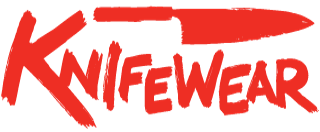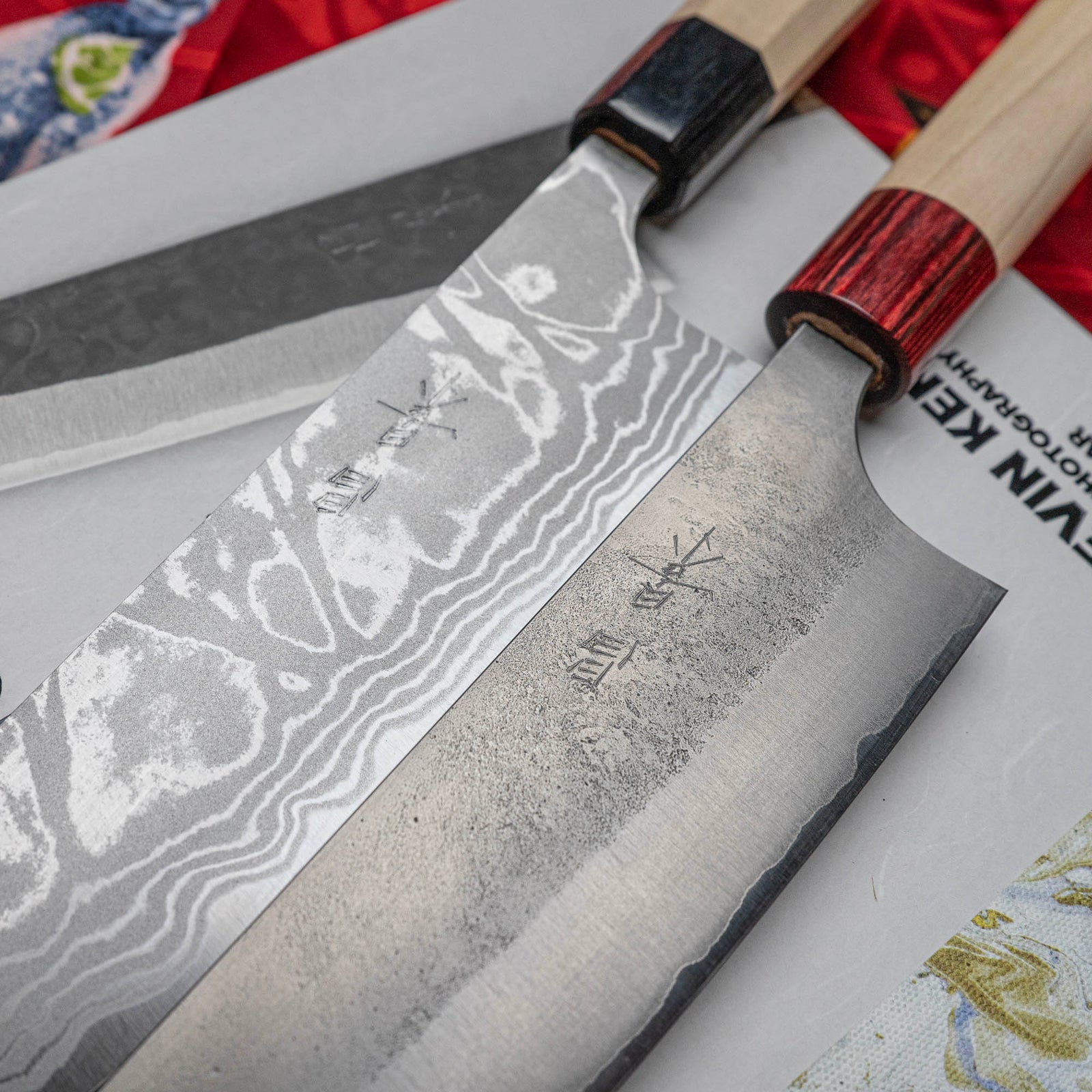Free shipping on orders over $100 - Excluding konro grills
Free shipping on orders over $100 - Excluding konro grills
Japanese Knives
Sharpening
Accessories
What Japanese Knives are Best for Cutting Meat?
March 18, 2024 6 min read

At the risk of sounding like a weirdo, I find one of the most satisfying jobs to tackle in the kitchen is really nailing some butchery. Breaking down a chicken or a beef tenderloin super efficiently and minimizing waste gives me incredibly good vibes. Laying all my beautiful meat on a tray and carefully collecting all the trim in a freezer bag for stock always makes me feel like a pro, so having the right tools to achieve this level of culinary nirvana is really important to me. Not only is it an activity that brings me joy, but it also saves me money. Buying meat and fish in larger cuts and breaking them down myself is cheaper overall, and the scraps can also be utilized into a delicious homemade stock that both elevates your cooking and saves even more dollars!
When it comes to meat cutting, you really only need two knives - one small, one large. Your small knife is typically used for boning & trim, and your large knife is used for portioning. But there’s a ton of variety, and the right knife is going to be different for everyone depending on your personal taste and what kind of meats you’re breaking down the most. Let’s take a look at some of the best tools for the job!
Western Boning Knife
This one is a no-brainer. A Western-style boning knife is versatile and easy to use. They usually measure around 150 mm in length and are typified by having a slender blade and an articulate tip. With this knife, agility is truly the name of the game. Its small, pointy stature makes it super easy to sneak the tip under bits of fat or scrap that need to be shaved off. They’re also great at working and manoeuvring in between bones. I also like to use the spine to scrape against the bone (think lamb rack!) to remove pesky bits of scrap and membrane that will burn on the grill or in the oven. Many of these knives also tend to have a little bit of flex. This is much more a matter of personal preference, but comes in handy when you’re tackling a whole side of pork or butchering your own game. Our Kasumi Boning and Silverthorn have great flex, while our super solid TOJIRO Classic is rigid and firm.

Japanese Honesuki
The Honesuki is a bit more specialized. These little knives have a more triangular shape than a Western boning knife - the heel is usually nice and thick and also quite tall, allowing for knuckle clearance. This feature is designed with chopping through joints and cartilage in mind. However, as the knife reaches its drop point tip, the grind taper and becomes very thin, allowing for great articulation. This is my weapon of choice when it comes to breaking down chickens, rabbits, or other smaller animals full of bones and joints. If you’re looking to break down a chicken to make yakitori, this knife is your one-stop shop! Make sure to double-check, though, as some Honesukis are single-bevelled, meaning you’ll need to get a right or left-handed version depending on your handed-ness! If you love the effortless grind of a single-bevel knife, the Glestain is my favourite. However, if you’re like me and prefer the straightforward cutting nature of a double-bevelled knife, Masashi-san makes some of the best knives in the world!

Petty Knife
Still figuring all this out? Just building the basics of your set? All good. While boning knives and Honesuki knives are ideal for meat cutting, you can still do most of these jobs very efficiently with a well-designed petty. Petty is simply a “creative” translation of the French “petite”, which I feel speaks for itself. While they’re typically not as articulate or rugged as a boning knife, they still work really well at trimming meat. They’re not as thick or tall as a honesuki, but they’re still fairly well suited to cut through joints and cartilage. Compared to the boning knife or honesuki, they’re much more versatile. They can easily manage cutting up fruits and vegetables; think of it as more the jack of all trades, master of none! I would probably recommend one with a bit more length (around 135-150mm) and perhaps something with a bit more height!

Nigara SG2 Kurouchi Tsuchime Sujihiki 240mm
Sujihuki
Alright, now THAT’S a knife! The Sujihiki (Japanese for “Flesh Slicer) is the best tool for slicing meats. They’re quite long (usually 240mm, 270mm, or 300mm), and very narrow. These knives are purpose-built to firmly yet gently glide through protein: the great length of this knife means it’s easier to slice through something very big without needing to saw back and forth too much. The narrow nature of these knives also means they’re going to generate less friction and tearing when slicing through something delicate like smoked salmon. Personally, I look for a nice long one - I think 240mm or 270mm is perfect for most people. Remember: you can cut the small fish with a big knife, but you can’t cut the big fish with a small knife! I also look for something made out of really hard steel. Skin and meat are the things that will dull your blade the fastest, so something that measures really high on the Rockwell hardness scale will hold an edge for a longer time. All of the knives you’ll see at Knifewear are nice and hard, but Carbon steel and Powder steel knives really jump the juice in terms of edge retention.

Gyuto
Just like the petty, if you’re looking for something that can cover a lot of bases, including cutting meat, the gyuto is a solid choice. A lot of folks would simply refer to this shape as a “chef’s knife,” and they wouldn’t be wrong - this guy can do pretty much anything! However, the word “gyuto” is pretty telling, as it actually translates directly into “Cow Sword”. The gyuto is essentially the Japanese take on a Western-style chef’s knife. When you go grocery shopping and visit the butcher’s counter, you’ll see a lot of big pieces of meat. Chuck roasts, pork loin, whole chickens, things of this nature. However, when you go to the meat section at the grocery store in Japan, this kind of stuff is far less commonplace. The idea of roasting a whole chicken is quite unusual to most Japanese cooks, so the knives that they’ll typically have at home aren’t really designed for this kind of work. You see loads of santokus or nakiris, but the gyuto is used much less frequently. In the Western kitchen, it's much more practical to have a gyuto. They're usually about 210mm or 240mm in length and has a nice pointy tip. Gyutos are typically much taller than a Sujihiki but will work well for carving a roast or portioning steaks.

The Cleaver
Ok, amateur hour is over. It’s time for the big guns. If you’re looking to chop a chicken into six pieces (bones and offal included) and blast it into the fryer, you’re gonna need a meat cleaver! A meat cleaver is pretty different then the rest of the knives mentioned. These are typically thick, made from softer steel, and built for durability. They’re not exactly “shave-ready”, but that’s definitely not the point. If you’re looking for a knife you can chop through pork ribs by hitting the back of the blade with a rubber mallet, this is your guy!
Is that it for meat knives? Heck no! There are definitely some…
Honourable Mentions
Deba: This guy is designed for fish, but there’s no reason you can’t use it like a single bevel honesuki. They’re heavy and durable, but don’t try going through drumsticks and pork bones - they’re sharpened nice and thin and can get chipped more easily than you might realise!
Chuka Bocho: Just ask Colin. These knives are super fun, and really versatile.
Yanagiba: Designed for slicing fish, but they’ll make short work out of steaks without a fuss. They’re also super sharp, and tons of fun to use and sharpen.
Kiritsuke: Kind of like a Gyuto, but with a dropped tip. If a gyuto can do it, a kiritsuke can too!
Meat cutting can definitely be a bit intimidating. High-quality meat can be pricey, and processing it properly can be a little scary. Practice and training are important, but I think it’s equally important to use the right tools for the right job and make sure that tool is sharp! Don’t forget to grab a honing rod and a strop to keep your knife in good shape, and you’ll be experiencing butchery zen in no time flat! Enjoy!
Owen Whitinger
Owen is another ex-chef among our ranks. After Chef-ing in Edmonton for around 12 years, he gave it up to be a human being again! He moved out to manage the Vancouver shop in 2018 and never looked back. Later, nerds! He can almost definitely beat you in a game of Street Fighter. come chat with him about football, steel, and how we are, once again, living in a golden age of rap music!
Subscribe
Sign up to get the latest on sales, new releases and more …





















